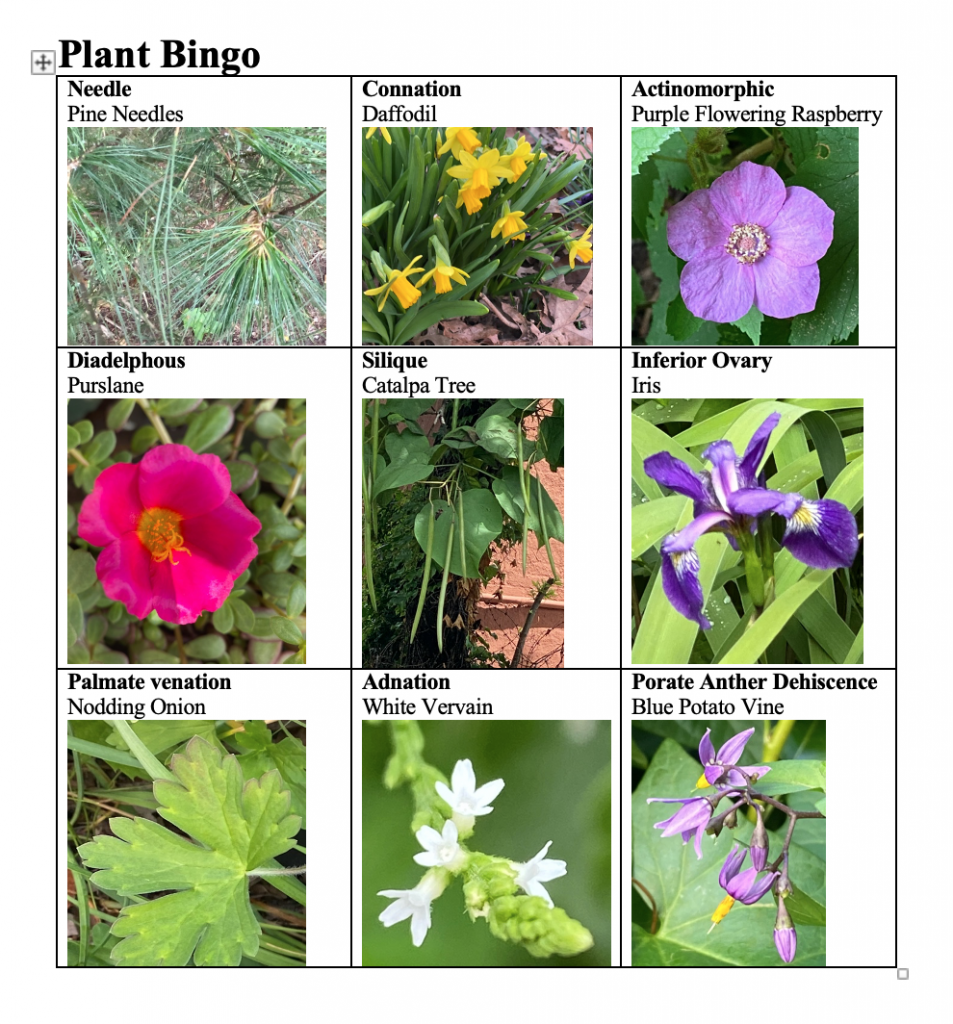Plant BINGO is fun. I brought my daughter with me to find and identify the proper species with the provided terminology. One thing we have seen all over Brooklyn is the Silique, the Catalpa Tree, and until this course we just wondered about it. To complete the course, I recreated the table in Word however I had to upload it as a jpg.




Excellent job on these Pier! The only one I would have another look at is the Catalpa tree. It is a member of the Bignoniaceae and as such does not have a silique as a fruit, although the fruit is long and skinny, but it is actually a capsule with axile placentation. While a silique is characteristic of the Brassicaceae and has a central replum where the seeds are attached, and not to the carpel margins as in Catalpa (see below an image of an ovary in XS of another member of the Bignoniaceae) showing axile placentation and two carpels.
Thx Steffi. I actually swapped it out from pursalane b/c I found it in a book titled “Florida Ethnobotany” by Daniel Austin and he said it was a silique but without explanation. This is good to know.
*Purslane* (which I then used for another square so it’s all good.
Sorry- I’m multi-tasking and should have elaborated- the tree is here in Brooklyn, I found the ID in “Florida Ethnobotany.” The Catalpa Tree is all over Brooklyn- while not a pollutant- I’m sure it’s home here is anthropogenic. Before Brooklyn became so gentrified- even as recent as 10 years ago, we used to have the most beautiful gardens often filled with a mix of native and tropic flora. Most of those gardens have become luxury houses (like the Joni Mitchell song), but somehow these amazing trees have survived.